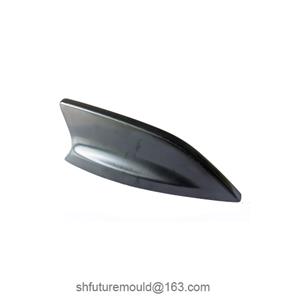How to Prevent Sink Marks in Injection Molded Product Design
The design stage of injection molded products plays a crucial role in preventing sink marks. Proper design can minimize the occurrence of sink marks and improve the product's quality and appearance. Below are key methods for preventing sink marks:
1. Optimize Wall Thickness Design
Maintain Uniform Wall Thickness
Avoid uneven wall thickness in product design, as thicker areas cool more slowly and are prone to sink marks.
Reduce Thick Sections
Minimize the thickness of heavy sections in the design. If unavoidable, incorporate ribs or hollow structures to reduce stress concentration caused by material shrinkage.
2. Design Ribs Appropriately
Control Rib Thickness
Rib thickness should ideally be 50%-70% of the wall thickness to avoid localized thick areas that lead to sink marks.
Optimize Rib Layout
Place ribs in areas with high load demands, ensuring their orientation aligns with the material flow direction to improve filling uniformity.
3. Improve Corners and Transition Areas
Use Proper Corner Transitions
Sharp corners or abrupt changes in edges and connection areas can cause uneven cooling and increase the risk of sink marks. Use smooth transitions to reduce stress concentration.
Smooth Thickness Transitions
When transitioning from thick to thin walls, use a gradual transition design to avoid sudden changes.
4. Optimize Gate and Runner Design
Choose Suitable Gate Types and Locations
Gates should be positioned near thick sections to ensure the material fills the mold cavity quickly, reducing uneven filling and sink marks.
Use Multi-Gate Design
For larger parts, multi-gate designs can improve material flow uniformity and prevent uneven cooling due to long flow paths.
Optimize Runner Dimensions
Ensure the runner dimensions are adequate to reduce material flow resistance and improve filling performance.
5. Enhance Cooling Efficiency
Uniform Cooling Channel Layout
Design cooling systems to cover critical areas of the mold, avoiding localized overheating or insufficient cooling.
Use High Thermal Conductivity Materials
Employ high thermal conductivity materials (e.g., beryllium copper alloy) in the mold to improve cooling efficiency and minimize shrinkage-related inconsistencies.
6. Optimize Surface Textures
Add Surface Texture
Applying textures to the product surface can mask minor sink marks, making them less noticeable. Textures also help diffuse light reflections, reducing the visibility of sink marks.
7. Choose Suitable Materials
Use Low-Shrinkage Materials
Opt for amorphous materials (e.g., PC, PMMA) or materials reinforced with glass fibers to effectively reduce shrinkage deformation and sink marks.
Consider Material Modifications
Add fillers (e.g., mineral powders) or modifiers to improve material dimensional stability.
8. Employ Auxiliary Techniques
Gas-Assisted or Water-Assisted Molding
Introduce gas or water channels in thick sections to reduce the solid volume, mitigating shrinkage-related sink marks.
Vacuum-Assisted Molding
Vacuum technology helps eliminate trapped air and improves material distribution, reducing surface defects.




